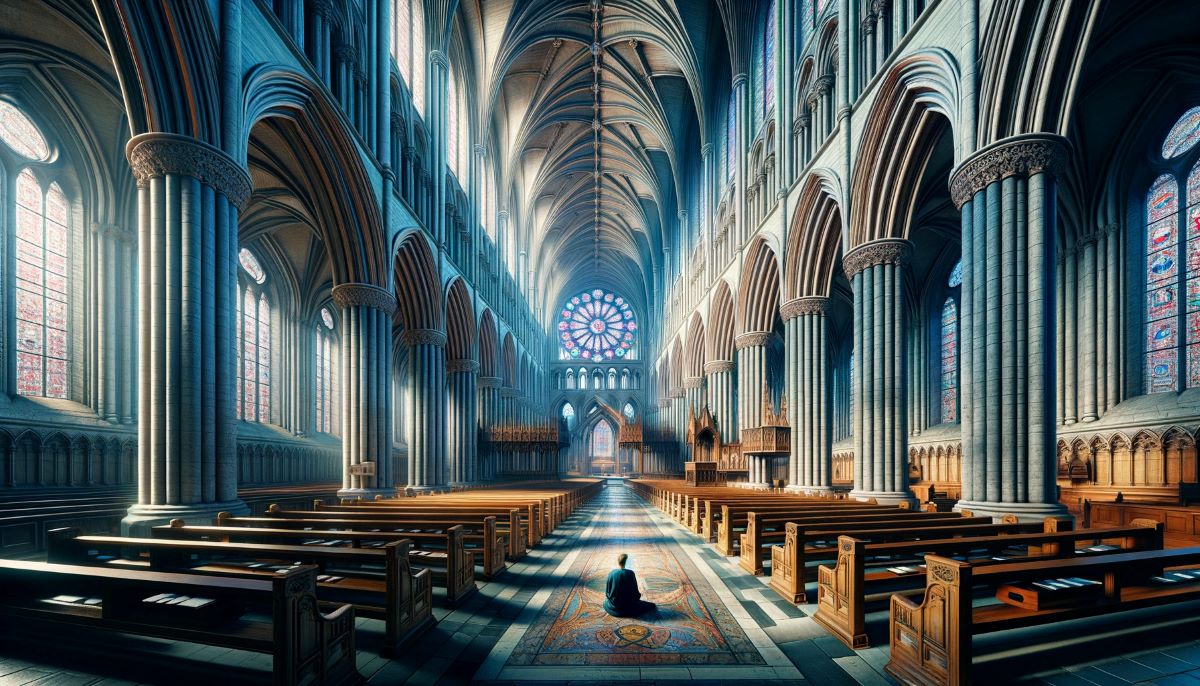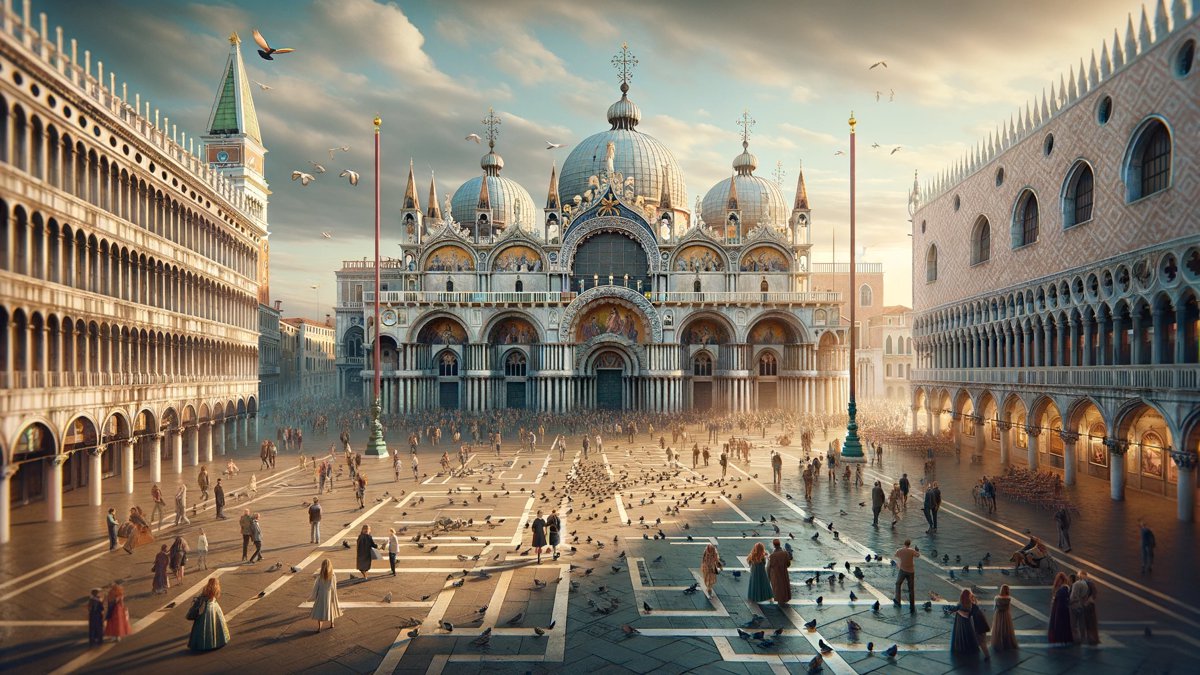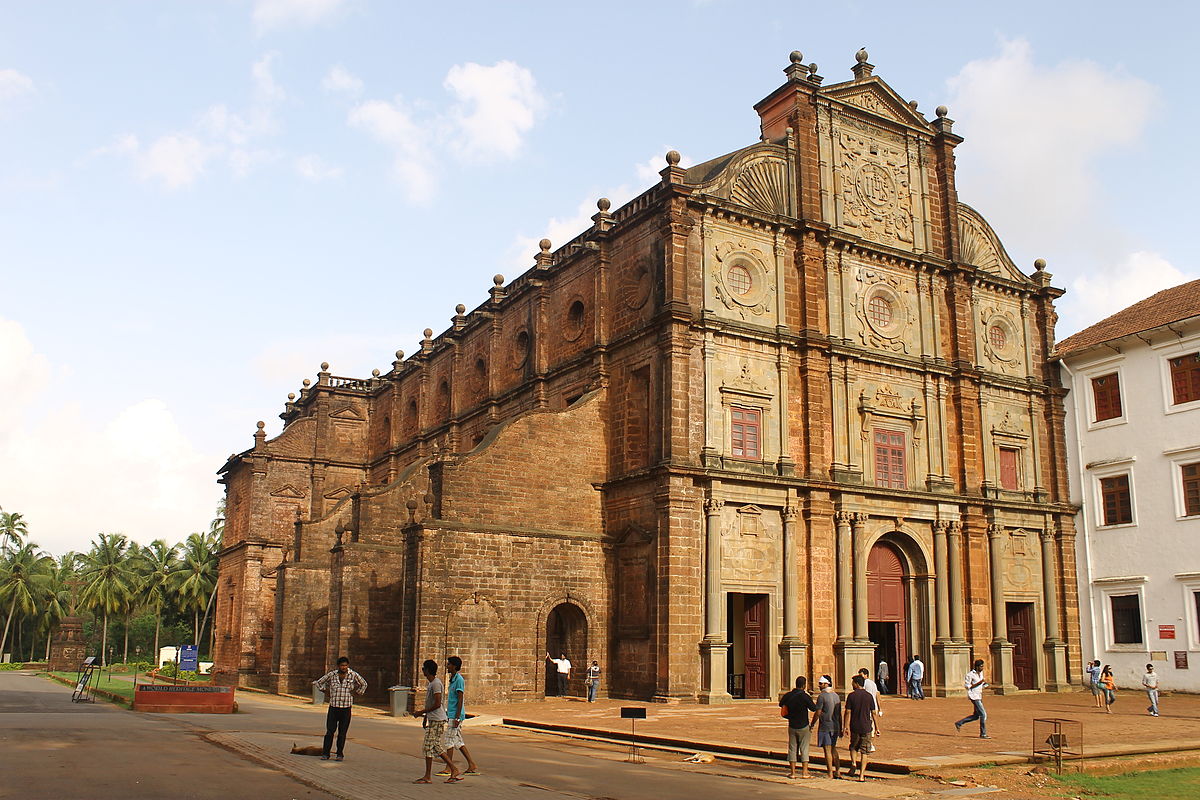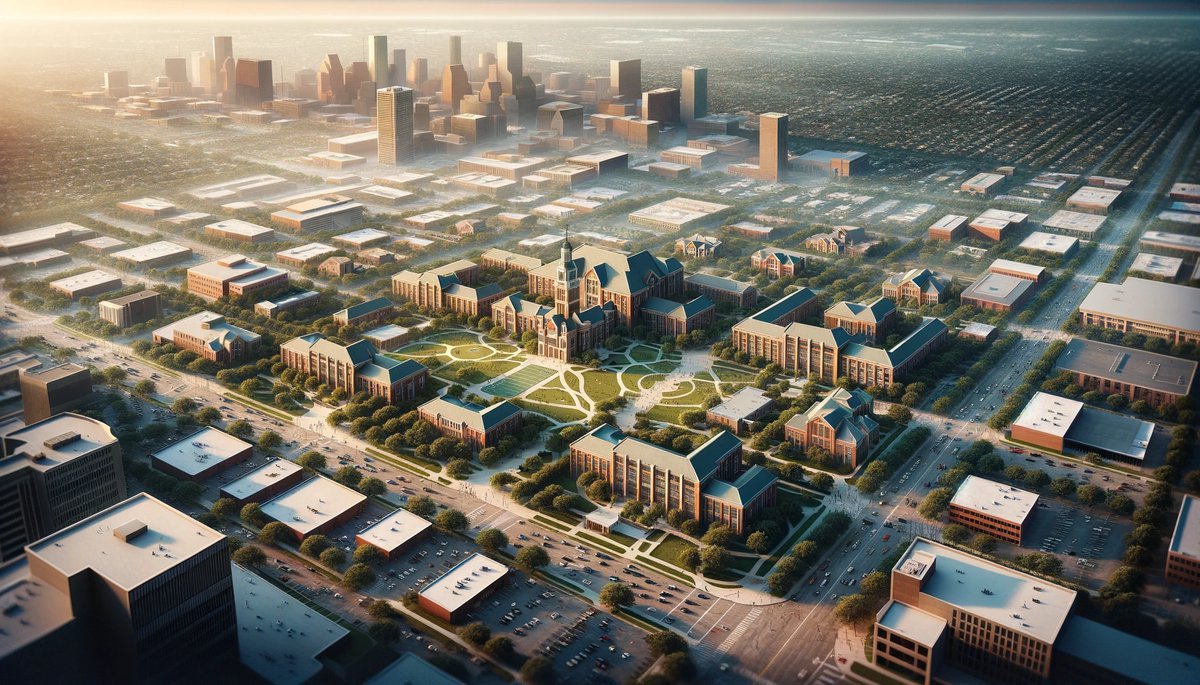Home>Arts and Culture>Where Is Manila Cathedral Located


Arts and Culture
Where Is Manila Cathedral Located
Published: February 17, 2024
Jason DeRose, Managing Editor at Christian.net, uses his expertise in religion and journalism to deepen understanding of faith's societal impacts. His editorial leadership, coupled with a strong academic background, enriches the platform’s diverse content, earning him recognition in both journalism and religious circles.
Discover the rich arts and culture of Manila Cathedral, located in the heart of Intramuros, Manila. Explore the historical significance and architectural beauty of this iconic landmark.
(Many of the links in this article redirect to a specific reviewed product. Your purchase of these products through affiliate links helps to generate commission for Christian.net, at no extra cost. Learn more)
Table of Contents
Introduction
Welcome to the captivating world of the Manila Cathedral, a timeless symbol of faith, history, and architectural grandeur. Nestled in the heart of Intramuros, the historic walled city of Manila, the Manila Cathedral stands as a testament to the enduring legacy of the Catholic Church in the Philippines. As we embark on a journey to unravel the mystique and significance of this iconic structure, we will delve into its rich history, awe-inspiring architecture, and profound cultural importance.
The Manila Cathedral, also known as the Minor Basilica and Metropolitan Cathedral of the Immaculate Conception, holds a revered place in the hearts of Filipinos and visitors alike. Its storied past and majestic presence beckon us to explore the depths of its significance, from the early days of Spanish colonial rule to the present day.
Join us as we uncover the secrets and splendor of the Manila Cathedral, immersing ourselves in the tales of triumph and tribulation that have shaped its identity. Let us embark on a virtual pilgrimage to this hallowed sanctuary, where history, spirituality, and artistry converge to create an experience that transcends time and space.
Read more: Where Is Wells Cathedral Located
History of Manila Cathedral
The history of the Manila Cathedral is a compelling saga that intertwines the narratives of faith, resilience, and cultural evolution. Its origins can be traced back to the Spanish colonial era when the first church was built in 1571, shortly after the founding of Manila by Miguel Lopez de Legazpi. This initial structure, constructed from nipa and bamboo, served as the seat of the first bishop of Manila.
However, the cathedral's story is not without adversity. Throughout its history, the Manila Cathedral has endured natural disasters, fires, and wartime destruction. The most devastating blow came during the Battle of Manila in 1945, when the cathedral was reduced to rubble as a result of intense fighting. Despite these trials, the unwavering spirit of the Filipino people and the Catholic faithful ensured the cathedral's eventual restoration and resurrection.
The present-day Manila Cathedral, a majestic edifice that rose from the ashes of war, stands as a testament to the resilience and determination of the Filipino people. Its reconstruction, completed in 1958, heralded a new chapter in the cathedral's history, symbolizing hope, renewal, and the enduring power of faith.
The cathedral's historical significance extends beyond its architectural splendor. It has borne witness to pivotal moments in Philippine history, including the canonization of San Lorenzo Ruiz, the first Filipino saint, in 1987. Moreover, the Manila Cathedral has been the site of numerous significant events, from papal visits to national celebrations, further solidifying its place in the collective memory of the Filipino nation.
In essence, the history of the Manila Cathedral is a tapestry woven with threads of triumph and tribulation, resilience and rebirth. It serves as a living chronicle of the Filipino people's enduring faith and indomitable spirit, transcending time and leaving an indelible mark on the cultural landscape of the Philippines.
Architecture of Manila Cathedral
The architecture of the Manila Cathedral is a captivating fusion of diverse influences, reflecting centuries of cultural exchange and artistic evolution. The current structure, designed by renowned Filipino architect Fernando H. Ocampo, embodies a harmonious blend of architectural styles, seamlessly integrating elements of Spanish Revival, Baroque, and Neo-Romanesque aesthetics.
As one approaches the cathedral, the grandeur of its facade commands attention, with intricate carvings, ornate moldings, and majestic columns adorning its exterior. The twin bell towers, standing as sentinels of faith and heritage, rise proudly against the Manila skyline, exuding a timeless elegance that captivates visitors and pilgrims alike.
Upon entering the cathedral, one is greeted by a symphony of architectural marvels. The soaring nave, adorned with magnificent stained glass windows and elaborate ceiling frescoes, evokes a sense of awe and reverence. The ornate altar, resplendent with gilded details and masterful craftsmanship, serves as the focal point of the cathedral, drawing the gaze of worshippers and art enthusiasts alike.
The interior of the Manila Cathedral is a testament to the mastery of Filipino artisans and craftsmen, whose meticulous workmanship has endowed the sacred space with an atmosphere of transcendent beauty. The interplay of light and shadow, the intricate details of the retablos, and the ethereal ambiance created by the interwoven elements of architecture and artistry converge to create an immersive experience that transcends the boundaries of time and culture.
Furthermore, the cathedral's architectural significance extends beyond its visual splendor. Its structural integrity, meticulously restored after the ravages of war, stands as a testament to the enduring legacy of the Filipino people and their commitment to preserving their cultural heritage.
In essence, the architecture of the Manila Cathedral is a living testament to the confluence of history, art, and faith. It stands as a beacon of cultural pride and a testament to the enduring legacy of the Filipino people, inviting visitors to immerse themselves in its timeless beauty and profound significance.
Location of Manila Cathedral
The Manila Cathedral, a revered landmark of faith and heritage, is strategically situated within the historic confines of Intramuros, the ancient walled city of Manila. Nestled at Plaza de Roma, the cathedral holds court amidst a tapestry of historical sites, echoing the footsteps of centuries past and bearing witness to the ebb and flow of Philippine history.
Plaza de Roma, a bustling square adjacent to the Manila Cathedral, serves as a focal point for cultural and communal gatherings, offering a picturesque setting that invites visitors to immerse themselves in the ambiance of bygone eras. The plaza's verdant gardens and ornate fountains provide a tranquil oasis amidst the urban bustle, creating a serene backdrop for the majestic presence of the cathedral.
Surrounded by centuries-old structures and cobblestone streets, the Manila Cathedral stands as a sentinel of faith and tradition, its imposing facade and twin bell towers commanding attention amidst the timeless allure of Intramuros. The cathedral's proximity to significant historical sites, such as Fort Santiago and the San Agustin Church, further enriches its location, offering visitors a glimpse into the rich tapestry of Philippine heritage.
Moreover, the Manila Cathedral's location holds profound significance in the collective memory of the Filipino people. It stands as a testament to the enduring legacy of Catholicism in the Philippines, serving as a spiritual anchor and a symbol of cultural continuity amidst the ever-changing urban landscape.
The cathedral's strategic location within Intramuros not only facilitates access for pilgrims and tourists but also underscores its role as a custodian of history and tradition. Its proximity to key landmarks and cultural institutions ensures that the Manila Cathedral remains an integral part of the cultural fabric of Manila, inviting visitors to embark on a journey through time and spirituality.
In essence, the location of the Manila Cathedral is imbued with historical, cultural, and spiritual significance, offering a gateway to the soul of the Philippines and a testament to the enduring power of faith and heritage. It stands as a timeless beacon, beckoning travelers and pilgrims to partake in the legacy of Intramuros and immerse themselves in the profound narratives woven into its storied streets and hallowed edifices.
Importance of Manila Cathedral
The Manila Cathedral holds profound importance as a cultural, historical, and spiritual cornerstone of the Philippines. Its significance transcends mere architectural grandeur, encompassing a myriad of dimensions that resonate deeply with the Filipino people and visitors from around the world.
Read more: Where Is Lincoln Cathedral Located
Spiritual Sanctuary
At its core, the Manila Cathedral serves as a spiritual sanctuary, offering solace, inspiration, and a sense of connection to the divine. As the seat of the Archdiocese of Manila, it holds a pivotal role in the religious life of the nation, serving as a sacred space for worship, reflection, and communal gatherings. The cathedral's hallowed halls have borne witness to countless prayers, sacraments, and moments of spiritual contemplation, fostering a profound sense of reverence and devotion among the faithful.
Cultural Heritage
Beyond its religious significance, the Manila Cathedral stands as a custodian of cultural heritage, preserving centuries of artistic, architectural, and historical legacies. Its architectural splendor, a testament to the craftsmanship of Filipino artisans and the enduring influence of Spanish colonial aesthetics, serves as a living canvas that narrates the evolution of Philippine art and culture. The cathedral's role as a cultural icon is further underscored by its location within the historic confines of Intramuros, where it stands as a sentinel of tradition amidst the urban landscape.
Historical Symbolism
The cathedral embodies historical symbolism, encapsulating pivotal moments in the narrative of the Philippines. From the early days of Spanish colonization to the ravages of war and the nation's journey towards independence, the Manila Cathedral has stood as a silent witness to the ebb and flow of history. Its resilience in the face of adversity and its role as a backdrop for significant events, such as the canonization of the first Filipino saint, San Lorenzo Ruiz, imbue it with a profound historical significance that resonates with the collective memory of the Filipino people.
National Identity
Moreover, the Manila Cathedral is intricately woven into the fabric of the Filipino national identity. It symbolizes the enduring influence of Catholicism, the nation's rich cultural tapestry, and the spirit of resilience that defines the Filipino people. As a revered landmark that has weathered the tides of time, the cathedral stands as a testament to the indomitable spirit of the Filipino nation, inspiring pride, unity, and a sense of shared heritage among its citizens.
In essence, the Manila Cathedral's importance transcends its physical presence, encompassing spiritual, cultural, historical, and national dimensions that converge to form a profound tapestry of significance. It stands as a living testament to the enduring legacy of faith, heritage, and resilience, inviting visitors to partake in its timeless narrative and immerse themselves in the essence of the Filipino spirit.
Read more: Where Is The Notre Dame Cathedral Located
Conclusion
In conclusion, the Manila Cathedral stands as a timeless testament to the enduring spirit of faith, resilience, and cultural heritage. From its humble origins in the early days of Spanish colonization to its majestic presence in the heart of Intramuros, the cathedral has woven itself into the fabric of Philippine history, embodying the collective memory and aspirations of the Filipino people.
As we reflect on the cathedral's rich history, awe-inspiring architecture, and profound cultural significance, we are reminded of its enduring legacy as a spiritual sanctuary, a custodian of cultural heritage, and a symbol of national identity. The Manila Cathedral's significance transcends mere stone and mortar, encompassing the intangible threads of spirituality, artistry, and historical symbolism that bind the Filipino nation together.
Moreover, the cathedral's strategic location within the historic confines of Intramuros serves as a poignant reminder of the enduring legacy of Spanish colonial influence and the resilience of the Filipino spirit. Its proximity to key historical sites and cultural landmarks further underscores its role as a living chronicle of Philippine history, inviting visitors to embark on a journey through time and heritage.
As the Manila Cathedral continues to stand as a beacon of faith and tradition, it beckons pilgrims, art enthusiasts, and history aficionados to partake in its timeless narrative, to immerse themselves in the splendor of its architecture, and to pay homage to the enduring spirit of the Filipino people. It serves as a living testament to the power of resilience, the beauty of cultural diversity, and the unyielding force of faith that transcends the boundaries of time and space.
In essence, the Manila Cathedral is more than a physical edifice; it is a living embodiment of the Filipino spirit, a testament to the enduring legacy of faith and heritage, and a timeless symbol of cultural pride. As we bid farewell to this virtual pilgrimage, may the echoes of the cathedral's history and significance continue to resonate in our hearts, inspiring reverence, unity, and a deep appreciation for the enduring legacy of the Filipino people.













